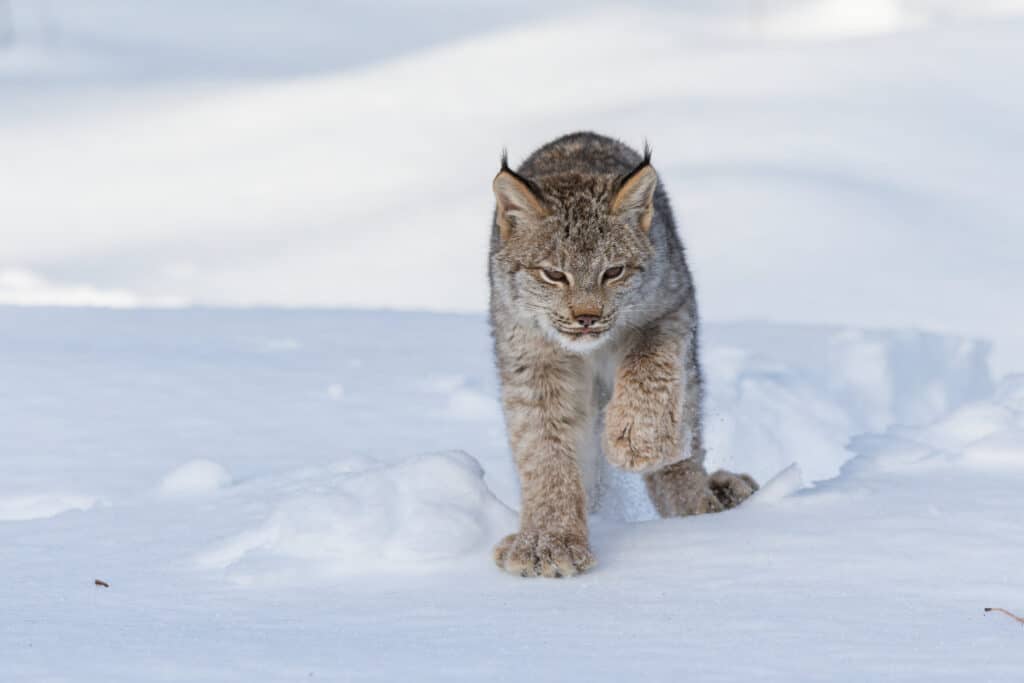
A federal judge has ordered the Minnesota Department of Natural Resources to halt the use of most snares in northeastern Minnesota. The action comes as a result of a lawsuit that sought to prevent inadvertent harm to Canada Lynx, which are protected by the federal Endangered Species Act. The elusive boreal forest feline is regularly caught in traps set for other fur-bearers.
The Center for Biological Diversity and the DNR agreed on a consent decree to settle the organization’s lawsuit. It was opposed by the Minnesota Trappers Association and other industry groups, but the judge said it was “fair, reasonable, and consistent with the governing law.”
There are believed to be 50 to 200 lynx living in Minnesota at any one time. The state is one of the only ones in the conterminous United States to offer appropriate habitat for lynx, and is on the southern edge of the animal’s native range. Since 2008, the DNR has recorded at least nine lynx accidentally trapped in Minnesota.
“Like so many Minnesotans, I’m sickened by the senseless cruelty of trapping,” said Collette Adkins, the Center’s carnivore conservation director. “Very few Minnesotans still trap, but those that do will now need to stop using indiscriminate neck snares where they could strangle and kill Canada lynx. This makes good sense and it’s long overdue.”
Trap rules
With the issue now settled, several restrictions on snares will be implemented in an area called the Lynx Management Zone, essentially north and east of Highway 53, comprising most of northeastern Minnesota. The new trapping regulations prohibit strangulation snares unless they are set in water, or have several precautions in place to prevent accidentally catching and killing lynx. The order also bans leg-hold traps that are large enough to capture lynx.
Lynx were designated as threatened by the U.S. Fish and Wildlife Service in 2000. The issue of protecting the animals has been in the courts since 2008. The recent ruling comes after a fresh lawsuit filed in 2020, and extensive negotiations between the DNR and Center for Biological Diversity.
Canada lynx are 30 to 35 inches long and weigh 15 to 30 pounds, according to the U.S. Fish and Wildlife Service. The wild cats are similar in size and appearance to the more common bobcat, but large paws, long hind legs, long black ear tufts and a short, black-tipped tail distinguish lynx from bobcats. Lynx primarily prey on snowshoe hares, often pursuing them through deep snow.
“This is a big win for Minnesota’s Canada lynx and all of us who care about them,” said Adkins. “These commonsense reforms of Minnesota’s trapping program will prevent needless, agonizing deaths of these rare cats, as well as other unintended victims like dogs.”
More information:
- Legal Win Protects Minnesota’s Rare Lynx From Cruel, Indiscriminate Trapping – Center for Biological Diversity
- Canada lynx (Lynx canadensis) – U.S. Fish and Wildlife Service

